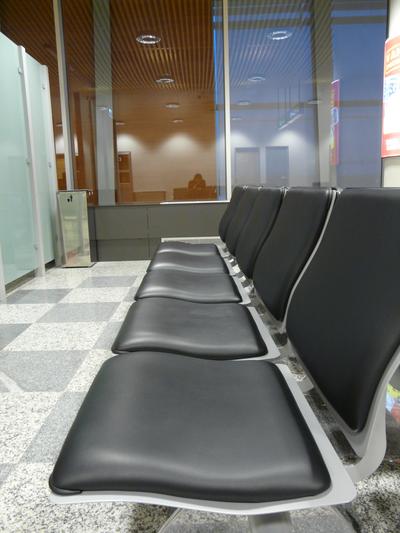I was surprised at how big this conference is – according to a JavaScript that counts rows in the attendee list there’s 879 people in this hall.
Getting your designs approved: 12 Simple Rules
by Larissa Meek
A representative of the big agencies world (works for AgencyNet) Larissa delivered a nice checklist of what you need to think about when working with a big client. What I missed is possible solutions for this but this would probably require a dialogue and a day or two. The thing is, and it seems to be the theme here, that everything depends – on the projects, the client, the team,…
Photoshop battle
Jon Hicks, Elliot Jay Stocks, Jina Bolton, Hannah Donovan with commentary from Andy Clarke
The contenders were split into two teams – men and women. Women started the Photoshop battle and while the guys were chatting created the beginning of the final picture. After two iterations a weird image of Andy Clarke was the result. The chat was interesting and the result of the battle was hilarious.
Print and the web
Elliot Jay Stocks
A nice session about how web design relates to other stuff we know – print design, drama – and what the main meaning of design is. While print design has different limitation and different dynamics it’s a valid source of inspiration and technique copying for web designers – it should be the only one though.
From Design to Deployment
by Jon Hicks
Displaying how to change a design into a deployed page on the case of Cheesophile we got a few great tips from Jon. A technique I haven’t used before but I will try from now on is basic.css that is loaded in all browsers and sets the content for older browsers. What you do here is only add some color, maybe try to size fonts and of course add the background image that notifies the user that they’re using an older browser. An interesting proposition is also to allow users to tab to the “skip to …” menu – even though it’s hidden you could show it when people use tab to navigate through the page using the :focus modified in CSS. Another neat idea is to use some sort of framework for development and when you’re finished just go and set specific CSS rules to semantic class names.
Another thing Jon mentioned is how different font sizes are for different fonts – I had this problem a while ago when I was first starting to use the Vista ClearType fonts that are much smaller than your regular Arial font. So I created a script that would determine what font a certain tag is using and add a class name to that element so you could target that font directly. It’s a JavaScript enhancement so it’s not a perfect solution but it will help 90% of the people using XP without the new fonts. The thing is I never really finished that script so it’s not online yet – I’ll find it when I come back and put it online so the typophiles can use it to give a better experience with different typefaces on different platforms.




